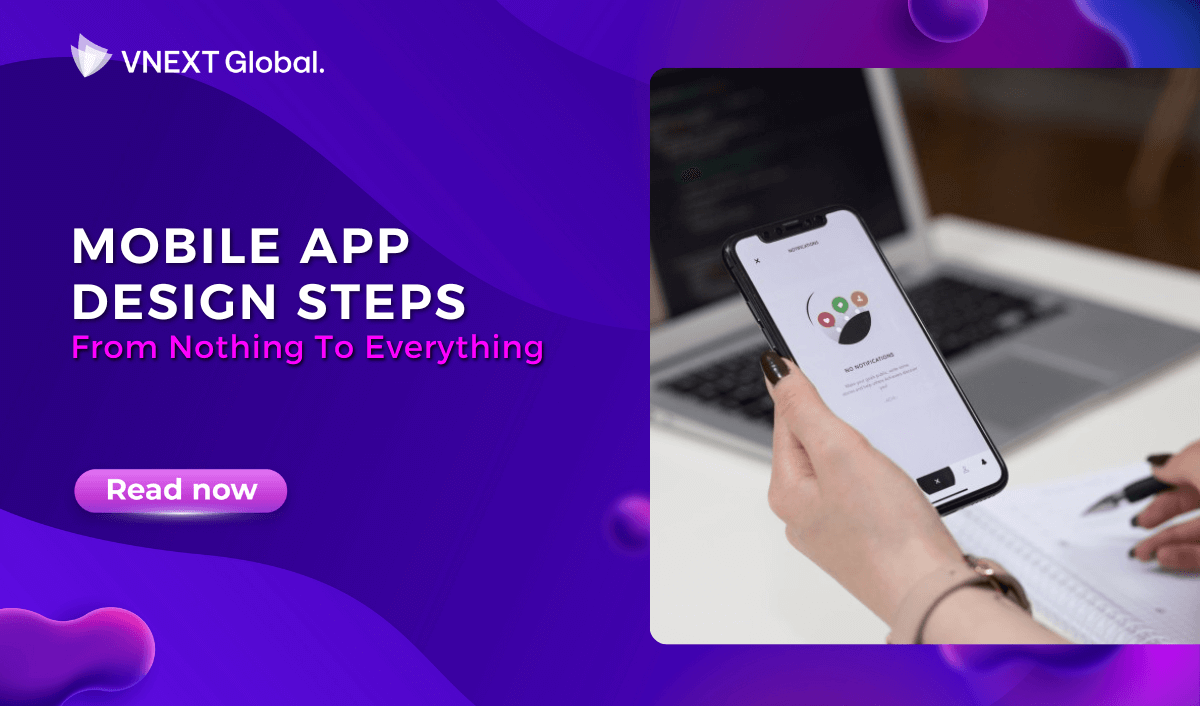Mobile App Design Steps: From Nothing To Everything
Many businesses today must admit the value of having a well-designed mobile application, even though it can be complicated and time-consuming to create an app from scratch. In fact, it can be even idiotic to underestimate the designing process since UX/UI influences the number of clients remaining on your platform and offers users their initial impression. For this reason, the initial mobile app design step should be a well-considered design. It is also essential to plan a thorough strategy for each phase of design in order to attain a successful mobile app development process. In this article, VNEXT Global, a leading mobile app development company in Vietnam, offers 6 critical mobile app design steps that can help you outperform competitors and draw in a large audience.
Step 1: Strategy building
The first stage in designing a mobile app is defining a plan. To do so, consider the following bullet points to determine your goals:
- Target audience identification
- Competitors' research and analysis
- Goals and objectives establishment
- Mobile platform selection
- Project analysis/ planning
During this stage, it is essential to conduct UX research to understand user patterns including behaviors, habits, needs, and concerns. After gathering the data, continue synthesizing them to improve your app’s usability. After your users’ needs and problems are identified, develop possible solutions to improve their experience. Aside from addressing user values, insights about your competitors’ products would help you identify your potential weaknesses and unique selling points (USPs). While working on those tasks, users’ cases and functional requirements of your app can be defined thoroughly.
Once your goals have been established, create a platform roadmap that involves prioritizing app needs and converting them into delivery milestones. If you have a shortage of time or budget, make sure to identify your minimum viable product (MVP) and prioritize it for the pre-launch.
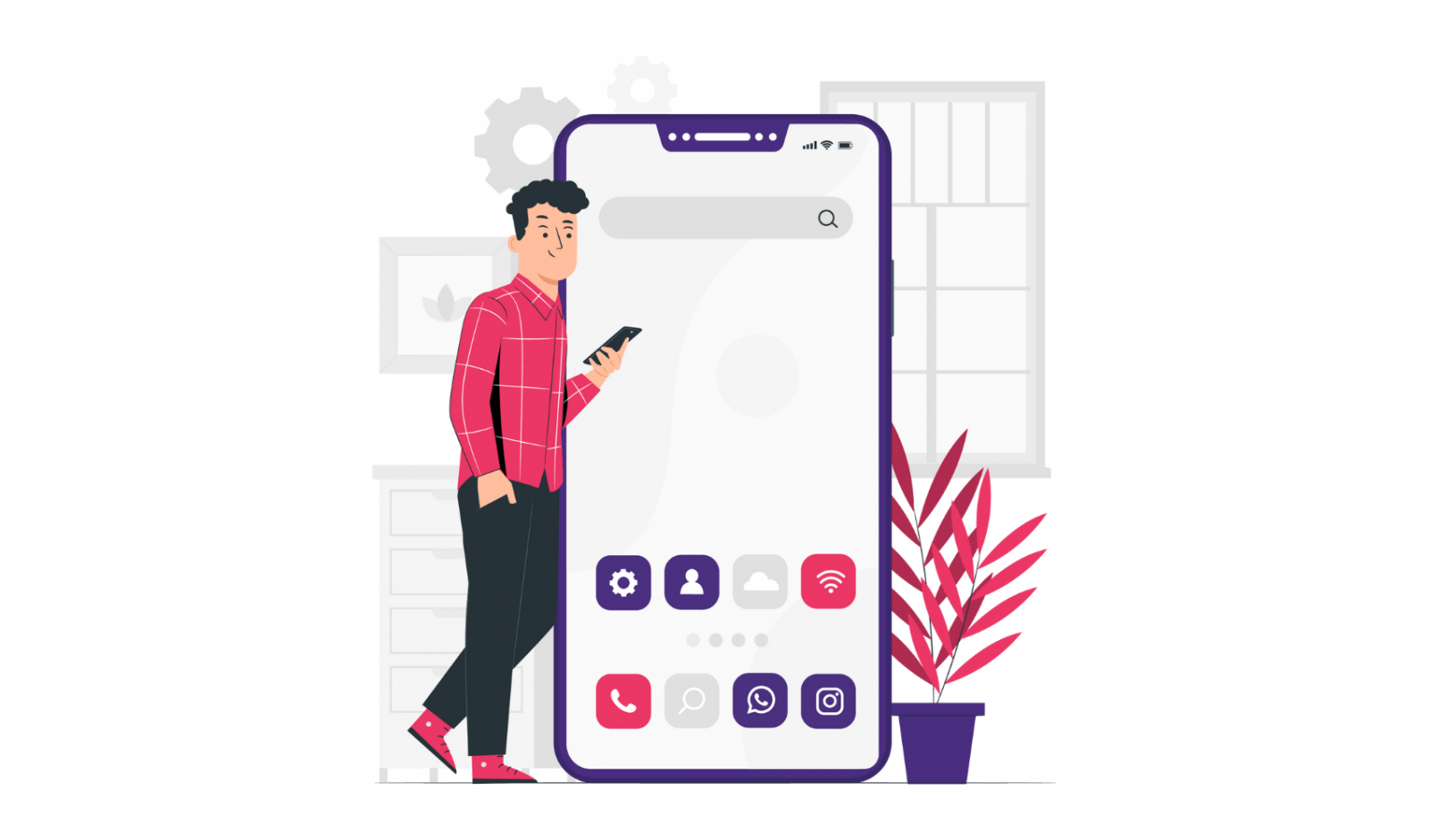
Step 2: Mobile app wireframing
After completing UX research and comprehending project aspects, the UX/UI team frequently begins app design with digital sketches known as wireframes. These are low-fidelity mockups, which are conceptual layouts. This is an important component of the design since it provides visual structure to the functional requirements of your app, which can also be exhibited to the customers prior to the final draft.
Designers create wireframes with an emphasis on aesthetics and user experience rather than color palettes and styles. Wireframing is a low-cost and time-efficient method for creating app layouts and altering them during evaluation. For that reason, you can get creative and practical at the same time, ensuring increased productivity in subsequent steps in the mobile app development process.
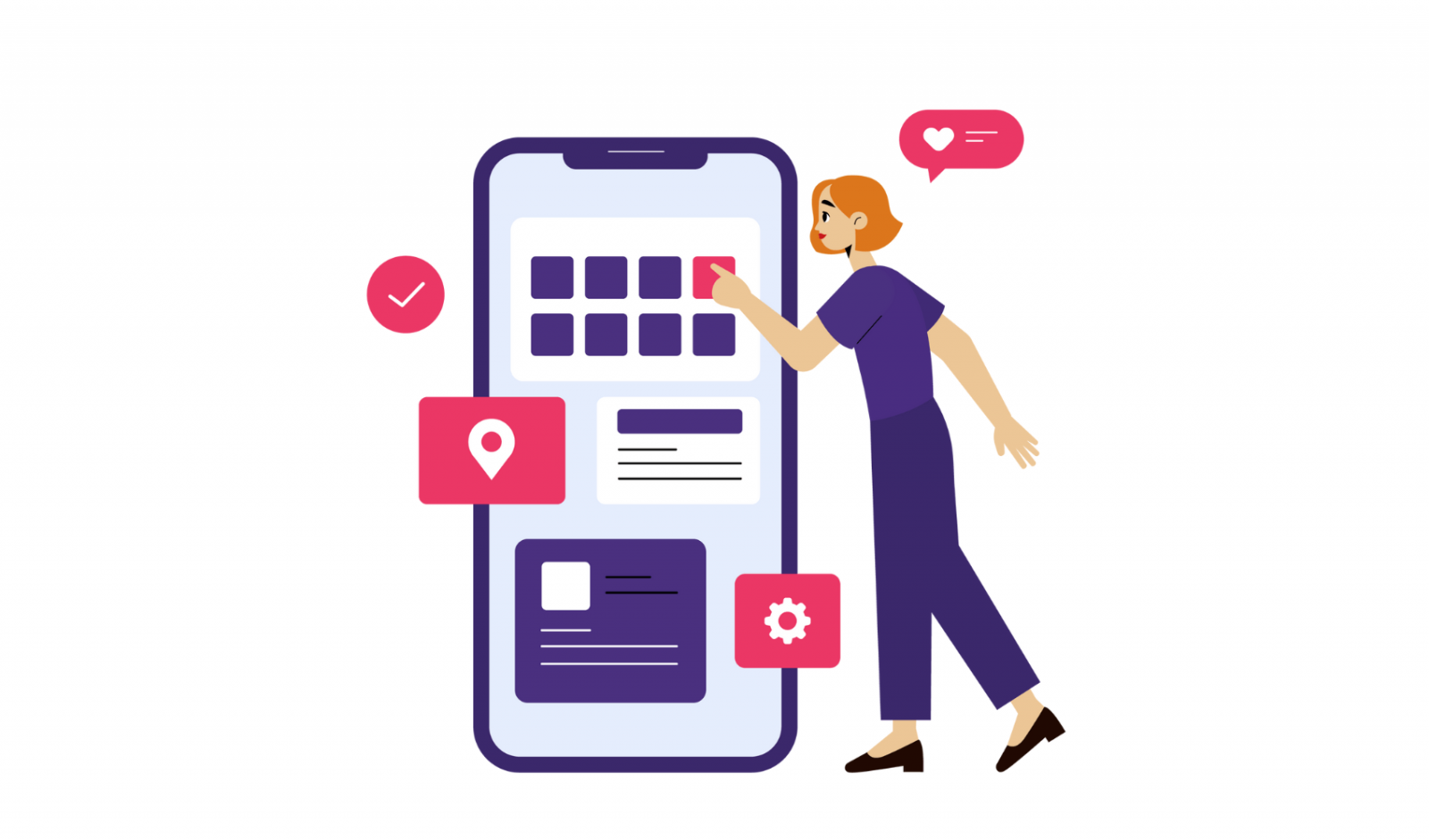
Step 3: Mobile app mockups
Following the wireframing phase, mockups are high-fidelity designs that illustrate the app's final visual depictions. In order to produce mockups, a style guide is applied to the prior app wireframes. Once the app's design has reached the final stage, the established information architecture, workflow, and aesthetics can be further modified based on feedback from clients and/or users.
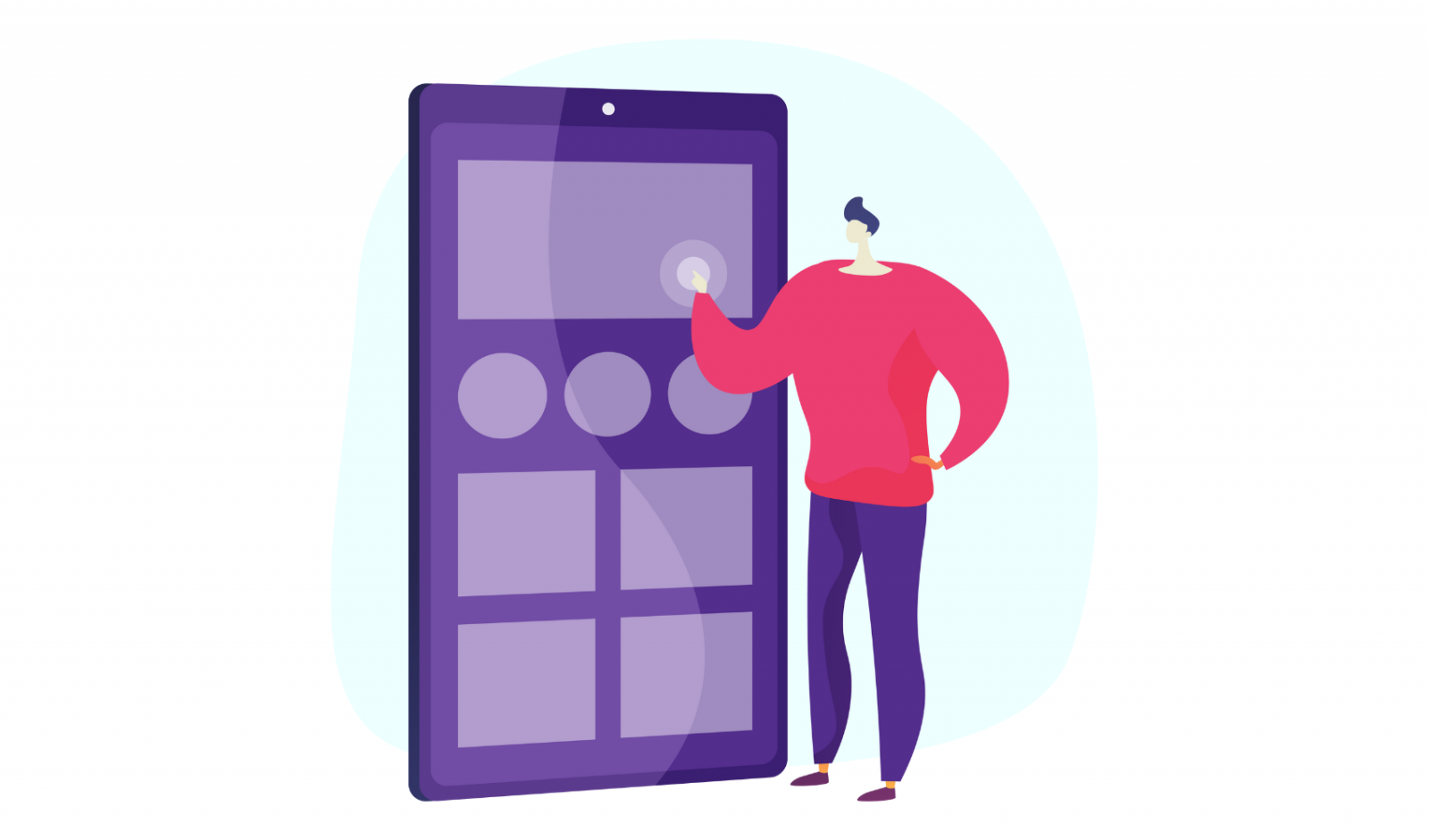
Step 4: Mobile app prototype
Mockups are converted into interactive prototypes with the use of tools such as Invision or Figma. After the app's development is complete, they are helpful for gaining insight into the processes and user experience of the app. The construction of a prototype for a mobile application may take a lot of time, but it paves the way for early testing of the functionality of the application. Prototypes, in general, can assist in identifying and implementing changes to the app's expected functionality based on testers’ feedback. In other words, it is one of the most crucial parts of your app development, which helps to clear misunderstandings to create a friendly app for the end users.
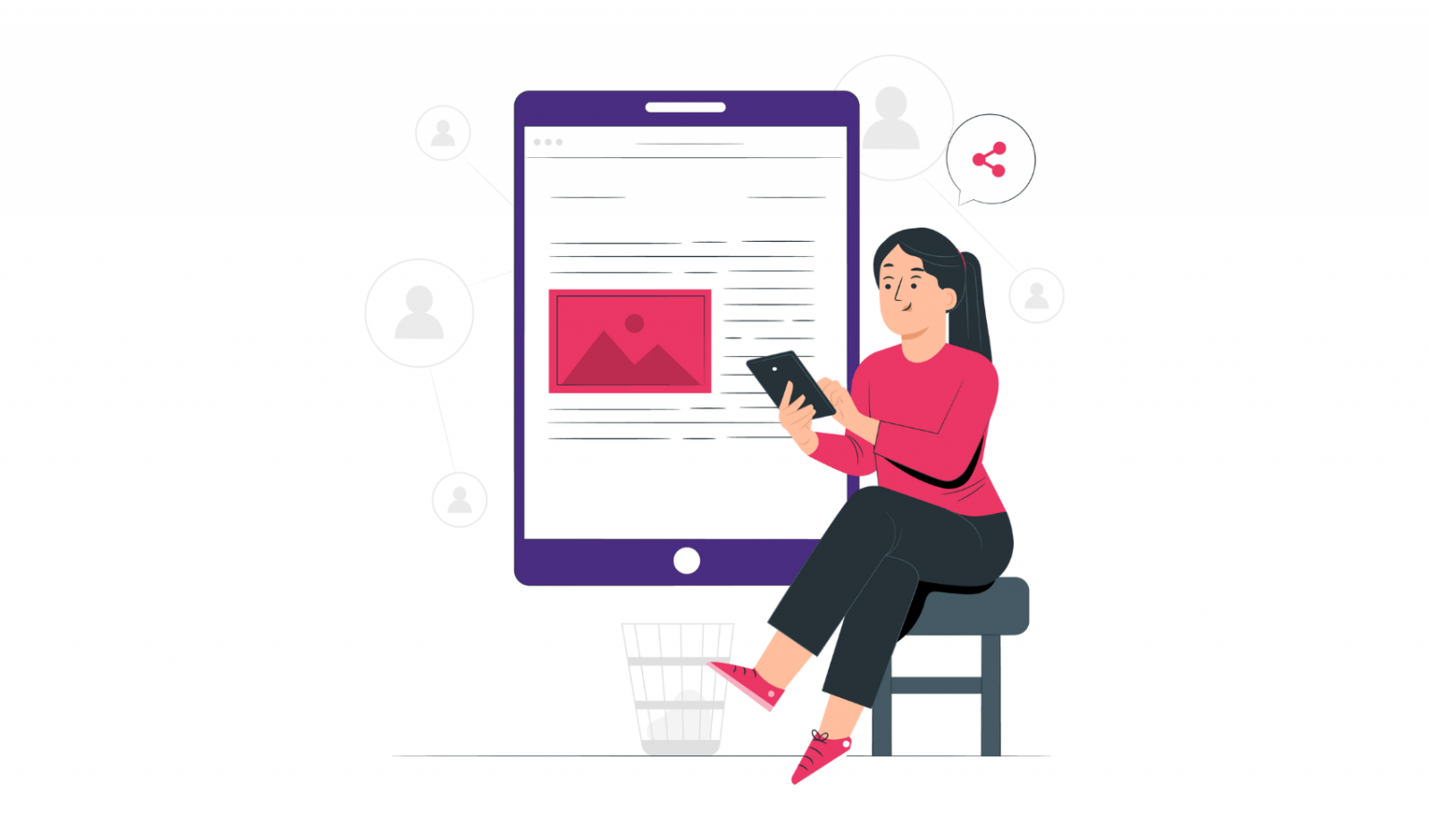
Step 5: Mobile app testing
1. User experience (UX)
A critical stage in mobile app testing is to ensure that the final implementation matches the user experience designed by the UX/ UI team. The user's first impression of the app will be shaped by its interface, workflow, and interactions. This phase should involve regular testing of the navigation design, icons, padding between data, style treatments, and fonts.
2. Functionality testing
The main objective of Functional testing is to confirm that the app's features and functionality can operate without any problems. This testing phase should include a feature comparison between the final mobile app development for IOs and Android if your software has been designed for both operating systems.
3. Mobile app’s performance:
Even when your mobile application meets fundamental performance criteria, it is critical to load-test the app, API, and backend by simulating the maximum number of concurrent users. In case of usage surges, the end app should be able to handle the load and run smoothly.
4. Mobile app‘s security:
If your mobile app has a login and sign-up feature, these sessions must be recorded on the device as well as the app's backend. Use a trusted service if your app saves user credentials on the device to facilitate re-login.
5. Device and platform usage:
On average, new mobile devices with updated hardware, firmware, and designs are released every 12 months. Mobile operating systems are consequently upgraded every three to four months. This is where the testing phase enters the picture. To ensure proper operation for multiple users, your app needs to be tested on a wide range of devices, by different mobile app development tools.

Step 6: Handing Over the Final Design
When everything is ready, it is time to send over the app design to a mobile app development company so that they can code the app and produce the final product. Developers can incorporate the necessary functionality for the app, including mobile clients and back-end elements, based on the design created by UI/UX designers. If everything goes as planned, the app will be ready for testing and deployment.
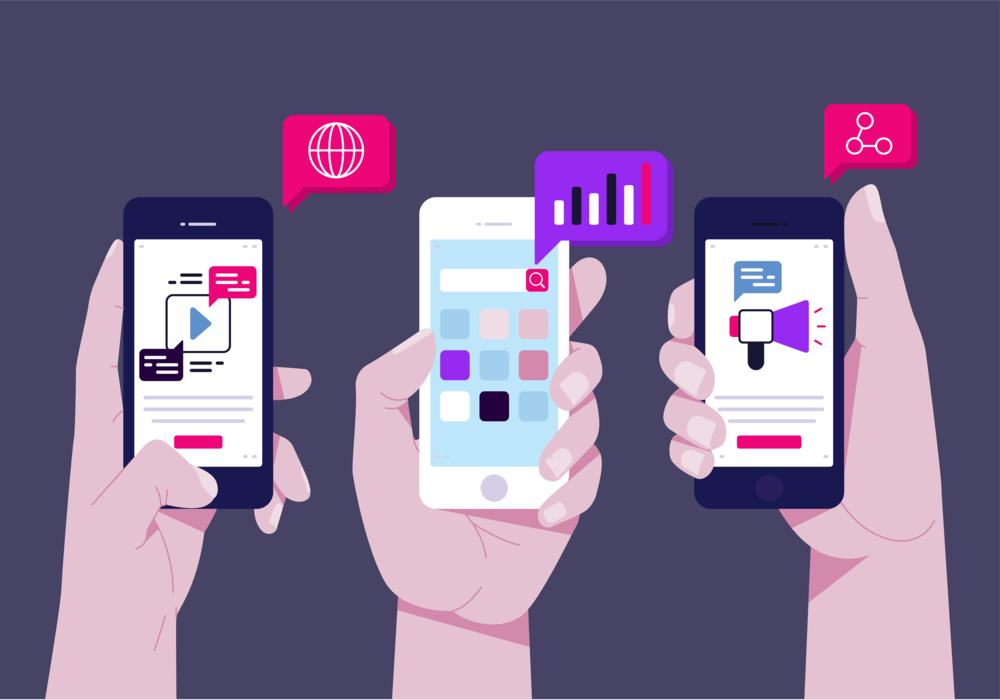
Final Thoughts:
Even though the majority of startups believe that designing the user interface for mobile apps is a difficult task that can be handled with less dedication than the coding phase, the reality is less encouraging. The UX/UI design of a mobile app has a big impact on how well the app works. This article outlines the need for thoughtful design, the primary functions, and the steps involved in creating a mobile user interface. And if you're ready, let's work with the VNEXT Global team to make your idea a reality!
If you are looking for a trusted IT partner, VNEXT Global is the ideal choice. With 14+ years of experience, we surely can help you to optimize your business digitalization within a small budget and short time. Currently, we have 400+ IT consultants and developers in Mobile App, Web App, System Development, Blockchain Development and Testing Services. We have provided solutions to 600+ projects in several industries for clients worldwide. We are willing to become a companion on your way to success. Please tell us when is convenient for you to have an online meeting to discuss this further. Have a nice day!

